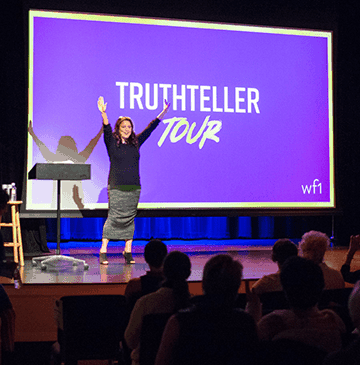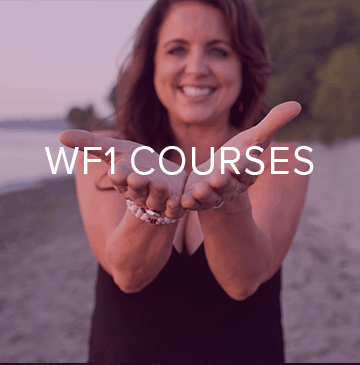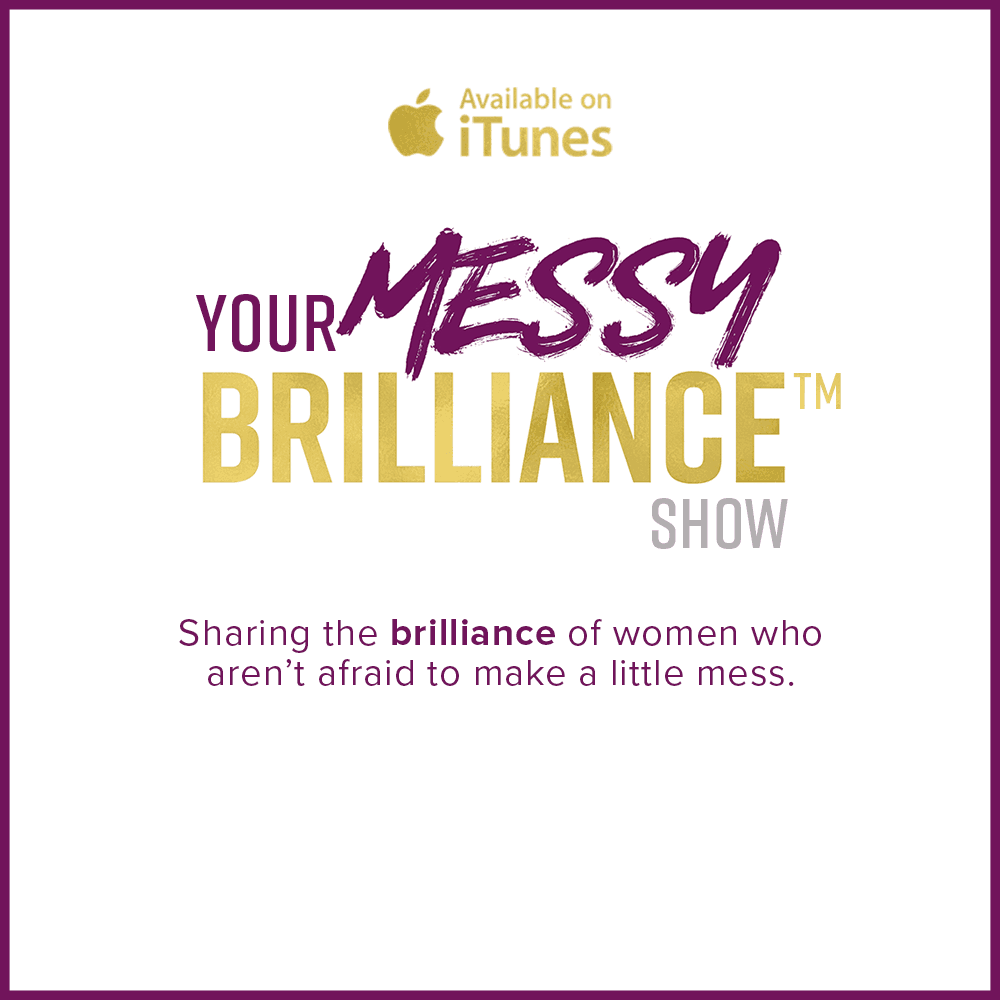
Interview with Sarah McLean
Dear Women For One Community,
Happy Spring! We have over 60 countries and an almost four million reach on our social media for this inspiring global movement. I have been busy speaking to women in Egypt, Macedonia and South America about what tools women need to empower themselves. Additionally my team and I have been shooting our upcoming YouTube videos to inform you more about how you can get involved and what Wf1 is all about. We cannot wait to launch our series when it is complete in a few weeks.
This week I am honored to present my latest conversation with a beautiful soul, Sarah McLean. I loved truly connecting heart to heart with Sarah about what presence means to her and her life’s journey around meditation and teaching.
Sarah McLean, best-selling Hay House author of Soul-Centered: Transform Your Life in 8 Weeks with Meditation, inspires all to deepen their meditation practice to maintain their connection to their center point of peace, equanimity, and joy.
She was the founding program director of the Chopra Center for Well-Being in California, was the director for the School for the Work of Byron Katie, and now directs the McLean Meditation Institute (MMI) for Transformative Meditation Training in Sedona, Arizona.
MMI offers meditation classes, self-discovery retreats, and a teacher certification program. Those who study with her discover the keys to becoming more self-aware, powerful, intuitive, authentic, and compassionate and deepen their relationship with their own soul. Download free meditations at www.McLeanMeditation.com.
Wf1: I am so honored to speak with you. Our community is excited to hear from you. I am particularly excited because I have a very similar background to you in many ways. It’s personally validating to me to engage in authentic conversation with someone with the same type of belief systems as myself.
The other day I was reading your book, “Soul-Centered: Transform Your Life in 8 Weeks with Meditation,” and it impacted me on a cellular level. No matter how long a person has been on her path, it is always beautiful to read a book that reminds us of what “presence” truly means. I went into the grocery store the other day and I set my intent to just be present. I was looking into people’s eyes and I was present, and I thought, wouldn’t this be cool to do on a daily basis? It would be great to be present with each person and experience them as they are in the moment.
Sarah: Well, what else is there? There is only this moment, right now. This is it, you know. The work I do about reminding people about their true nature and to show them how to lift that veil of stress that keeps all of us from being present with ourselves, with how we feel, with who we are, and from being in the moment. Each one of us can create a new normal through meditation – so that walking through Whole Foods, gazing into people’s eyes, just being present, breathing, not shutting down can become a new normal for so many.
I moved to Sedona 12 years ago and initially, my initial impression was that there are really two types of people here in Sedona. There are retirees from big companies in the Midwest, the more conservative type who love a small town, and there are those who are attracted to the energy and the metaphysical aspects of it – who can be a little woo woo. Though at first glance, I may have seemed a little new-agey, because I meditate, teach meditation, have studied Ayurveda, and lived in a monastery, I don’t actually consider myself that.
Since I was moving here to be with my husband, I didn’t want to be labeled one way or another. I wanted to be taken seriously. So, I made the choice not to be lumped into the metaphysical community, and to follow my environmental heart. I became involved with environmental conservation organizations in town: Keep Sedona Beautiful and Sustainable Arizona. Who can call that new-agey? I really believe in sustainability and protecting the environment. I am also an animal lover and want to protect wildlife habitat and the earth’s natural resources.
Though I was incognito, the Chopra Center would send people to me to learn to meditate. Little by little, many people in the community had taken my class. I came out of the closet, so to speak, and now, I have a thriving meditation institute and people who are becoming teachers with our meditation teacher training. It’s exciting!
Wf1: It’s really interesting that you chose to do that. I did that too. After spending many, many years sharing my beliefs in a more public manner, I said to myself, “This it for me. I really want to focus on doing other things right now, and integrate that into what I am doing.” I wanted to teach my beliefs and principles through my actions in the world.
Sarah: I was living in Los Angeles working with Byron Katie. I was so involved in my work I never really read the paper, listened to the news or watched TV. But when I moved to Sedona, my husband, who is very interested in the economy and current events, read the paper and watched the news every day. I began reading it too, looking for good news, but there wasn’t much, of course. I got discouraged, because there were stories about things like shutting down recycling centers because of budget cuts, or extreme thinning of our Ponderosa pine forests due to “fire concerns” or another tract of homes was being built after a land swap with the Forest Service. With all the building and increased population in Arizona, there was no mention of green building, or sustainable development. I got really frustrated and got involved in promoting sustainable building practices. I was on the founding board of Sustainable Arizona, a green building organization which connects people and communities interested in sustainability from those in Southern Arizona all the way West to Bullhead City and North in Flagstaff. I put together a newsletter connecting the sparse sustainability efforts so we could all see something was happening. There was some activity but it was a stark contrast with what I had left in California. There were a lot of petitions addressing renewable energy and protecting forest lands.
What I kept running up against, bringing it full-circle back to meditation, was that I could not change people’s minds. No matter how good my argument was, what the facts were, or how clear the logic was, people often don’t want to change. I was dealing with the public, builders, people on the Arizona Corporation Commission, people in the Forest Service, and those in charge of making decisions in their workplace about recycling and sustainability. Some were fearful of change, or didn’t want to make more work, or wanted to keep things the way they’ve always been, or didn’t see value in conservation or sustainability or protecting the environment, others were bought off, and had a disincentive to change.
Builders and contractors and elected officials didn’t seem to see the value in conservation – whether it was using recirculation pumps to save our water, solar energy to use the abundance of sunlight, or sourcing sustainable building materials to be sure our forests were protected. Ultimately, I realized the decisions were made by one person, and I was dealing with a person’s nervous system. Instead of changing their minds, I realized they had to see things in a different way, to have an open mind. I believed they needed a new normal – being present with the interconnectedness of life and consider all beings in each decision – I don’t want to sound dramatic, but the reality is that each decision one makes has an effect on everything else in the world.
Wf1: So are you still involved? Or are you more into the meditation, teachings, the retreats and all of that?
Sarah: I aim to make my business sustainable and to stay green in my business practices. I use recycled materials, I recycle. I donate a lot of my revenue to organizations devoted to such as nature and wilderness protection and animal rescue foundations. I aim to create awareness of issues that we all face on this planet we live on. Once people start to meditate, their awareness naturally expands and they begin to make different, more nourishing choices in their personal life and in relationships and how they live, whether it’s the car they drive, or how they power their homes, or where they get their next pet. They change their perspective to include all things. What Thích Nhất Hạnh, the Vietnamese Buddhist monk calls Inter-Being.
Wf1: I am so moved by your positive actions for the world. Women for One is based on three principles: authenticity, inspiration and manifesting a future for ourselves. We are encouraging inspiring women to share their stories with others, and also enlightening themselves by releasing it. It’s amazing; the people that are supposed to come to me do. My intent is to interview women who have released their stories, told them to others and have manifested their future into what they have envisioned. That is my intent when I reach out to women to interview. I like to ask them questions to inspire other women.
Sarah: So let me ask you a question. You said, as people tell their stories it allows them to release it, and helps them to manifest a future that they envision, what does that mean?
Wf1: Well, my belief is that, if you are stuck in your story and you’re a victim and not gaining any wisdom from it, you just stay there. But if you’re telling your story and setting yourself free to release it, there’s a lesson to you, and in the process, a lesson in sharing it with others. We’re interviewing women and men like you who can teach women skills like meditation to help them manifest their future.
Sarah: Good, good, good. See, for me, and I imagine probably the same for you, I never imagined that I would be here now. It’s not like I had a vision board and I had “Sedona” and “meditation institute” on it. I had no idea. Like you, I aim to live a life of integrity, saying “yes” and “no” and meaning it, and following my intuition, even if it doesn’t feel easy. I trust this life, and I know from experience that life loves each one of us, and will wisely guide us to our full potential, if we only listen.
Wf1: In your book, “Soul-Centered: Transform Your Life in 8 Weeks with Meditation,” I actually want to do the eight weeks because I need a refresher. I love how you share your personal story, and then allow the others to share theirs so the reader can relate and be inspired. Can you talk a little bit about your journey and your intention around writing the book?
Sarah: In the book, each week is focused on the cultivation of a principle that leads to what I call a Soul-Centered Life. Each week also includes a few meditations and mindfulness practices to enhance the specific quality.
They include how to live in the present moment, how to reduce stress and find peace, how to approach life with a beginner’s mind, how to cultivate self-compassion, how to realize your true essence and connect to the deepest part of you, how to be a better listener and say what you mean, how to listen and follow your intuition and be clear about what you want in life in general, and how to create a nourishing daily routine.
I have been teaching for years. Each time someone comes to learn to meditate with me, I listen to their story and as I do, I hear an issue to focus on which meditation can address. Some of the benefits of meditation are so profound and reach far beyond what people often hear such as lowered blood pressure, better sleep, and reduced anxiety. Most people come for a half day program, so I don’t have the time to go through the entire eight-week program, but along with teaching them to meditate, the five essentials to a successful practices, and the ways meditation trains your awareness and reduces stress, and sharing the Peacefinder Practices™ with them, I go over one of the principles, such as “beginner’s mind,” “present-moment awareness,” “listening to your yum and yuck” or “making nourishing choices.”
Eventually I realized I had to put this into an easy-to-follow program. People like a regimen, with real results. At first I was writing a 10-week program, but as I was writing the outline for it, research findings were being published simultaneously, and many of them talked about how meditating for 8 weeks can literally change the function and size of the brain. It just seemed really right to change the format to that.
Each one of the qualities that I outline has been an essential realization on my own path with meditation.
When I was in college I was interested in some of these concepts, there wasn’t a major in spirituality at the time, at least not at the one I attended. But I did learn to meditate. Then I began a daily meditation practice. I began to follow my intuition, and it led me to a deeper interest in holistic health, mind and body. I began to read about it and found the book Perfect Health, by Deepak Chopra. It was one of his first books and no one had heard of him or what he was talking about then, the ancient health practices of Ayurveda. I was led to more and more areas of interest, and each helped me become more intimate with who I was, and expressing that in the world. I worked with Deepak Chopra and the Chopra Center and its many incarnations for 8 years. After that I went to India where I lived in an ashram, and then taught Tibetan Buddhist Nuns English in north India. I moved back to the states to live in a traditional Zen Buddhist Monastery for two years, and then went to work for Gary Zukav. Later I went to work for Byron Katie and directing her international School for The Work.
At first, I didn’t have the desire to be a teacher. I just wanted to feel good. I was often in the back of the room helping to create a great event, trying to remain invisible and keeping the program going.
But over time, I was in the position to translate ideas and philosophies whether it was for Gary Zukav, Deepak Chopra, Byron Katie or Zen Buddhism, and share what I learned with others. Soon, I was in the front of the room, teaching and sharing my path. As it was for me, each “lesson” awaits you once you desire self-realization, and each is perfectly laid out for your journey.
Wf1: You really played with Zen Buddhism and meditation, and it worked for you. My question to you is what made you stick with traditional meditation as your philosophy and not go towards all the other quantum physics, energy, mass and all that?
Sarah: What I found was, no matter what the language was around Vedanta, Buddhism, philosophy or physics or mysticism, I found a commonality in the philosophy that reflected the same thing. We all are connected, we have a true nature that arises from the field of consciousness, and we are much more than a physical body. I love the new science and how it supports meditation, though I prefer to simply meditate, rather than think about it.
Along the way, I’ve had some philosophical challenges with traditional meditation, for example: Zen Buddhism was very patriarchal. We would chant all these men’s names and I was like, hey, who do you think they came from? Where are the women? So I wasn’t necessarily a follower, instead, I am an explorer, a pioneer. That’s what I am, and probably you are too. I take the message from what I get, and then I keep going with it. I put it in my experience bag and keep it with me, but I am not sentimental about tradition at all.
Wf1: That’s the way that I am, too. I am just so fascinated by quantum physics and being in an earth energy school when I was there … and with learning. I loved the Barbara Brennan thing and looked into energetic fields, but then I moved out of that and really looked at the world in that energetic, like Alex Grey draws it. I had all this yearning to learn more about how there is only one moment and there is no time and no linear place, and that felt really authentic to me. Sometimes, where I am now, I wonder why I haven’t stayed as deep in my meditation practice. I keep looking intellectually at all these other things instead of going deep. Here you are, really deepening your meditation practice, teaching it, and that has worked for you over the years. So it was more of a personal question.
Sarah: Ultimately, each one of us comes to our self-realization, in our own way. There are those who follow the path of the intellect, physicists and philosophers like Steven Hawking or Ken Wilber, who are constantly questioning the mechanics of creation. Or Einstein who said, “I want to know the thoughts of God.” These are examples of people who realize their true nature through their intellect, the path of the Jnana Yoga. Then there are those who navigate their spiritual life through their heart, such as devotees, who worship one or all. They are on the path of Bhakti Yoga. Then there are those people who are following the Raja Yoga path, like I do.; Doing the practices, follow the 8 limbs of yoga, and who really love to do the meditations. Each one of us has an affinity for one of the paths, and it’s best not to fight it. They all eventually join up anyway.
Wf1: That is a beautiful way to put it. That is a great teaching for me. It really is who you are; it’s your path.
Sarah: That intellectual craving is one of the paths to enlightenment too. It could be your path. Just go with it. But you know, the truth is, meditation really helps each of us transcend the mental activity, the belief systems, the “I know mind,” and the boundaries that we may not even know that we have, so that we can have the direct experience of that field of awareness that you are seeking … that Ken Wilber writes about, that Einstein was searching for, that you probably experienced with Barbara Brennan’s work.
I was actually thinking about this today. Through the refinement of one’s perceptions, and as the senses become more subtle, one can walk through the doorway to the infinite, and know it, experience it. As we meditate, our nervous system gets more purified, and this can help us to be more aware of energy, intuition, and you will see reality more clearly.
Wf1: Thank you for that clarity and vision, Sarah. What is your definition of authenticity for you personally?
Sarah: I believe being authentic is to be established in present moment awareness, responding to life by saying what you mean and meaning what you say. Being present to your own true nature as well as seeing the same in others, and, perhaps I am borrowing someone else’s line, but being authentic is when what you think, what you say, and what you do are all in alignment. It’s when you navigate life from your soul-center, being compassionate and powerful. And it’s so freeing and peaceful to live that way.
Wf1: Where is your happy place? I’m guessing it is around meditation. What does it look like when you visit your happy place or place of peace?
Sarah: Teaching. I love to teach. I love to help shift people’s awareness. When I’m teaching, there is no me there. I mean, I get out of the way and let consciousness itself be the teacher. I do set myself up to succeed as I get myself there on time, I have clean hair, my clothes are comfortable, I’ve got my materials, and I am ready to teach. Then I step out of the way, it’s almost like the teacher appears, a consciousness that is wiser than I am. The experience of sharing this wisdom just takes over. It is a really peaceful and expansive experience, and it feels so right like I’ve stepped into the flow and I’m free.
Wf1: I’m doing that more and more, trusting and getting out of the way, instead of trying to make things happen.
Sarah: You just never know what is going to happen next, living in your own integrity, being honest, saying what you mean and doing what you hear to do. I think that that path can be really powerful. That’s how my new meditation teacher training happened. I hadn’t planned to organize that, I never planned it. Because of my book, I was being interviewed the New York Times, Chicago Tribune, and a lot of different publications, and they would ask me where people should go to learn to meditate. Not everyone can come to Sedona and it can certainly be difficult for some to learn meditation from a book, but I just didn’t feel comfortable saying, “Go to your local yoga center.” Though I know a few yoga teachers who could teach meditation to anyone, I know not all yoga training includes training in teaching meditation, so I would say, “I’m really not sure,” because I wasn’t.
I soon realized I had to start a meditation certification program myself. And almost instantly people from all walks of life signed up to become teachers, from acupuncturists to funeral directors to CEOs. They are all on the path, because they, too, know that there is some real benefit to living an authentic life and being really free.
It is so empowering to be a teacher. You’re on the teacher’s path. You’re a teacher right now, in some way shape or form. Being a teacher refines your spiritual power. Though you have different challenges to face, they are all leading you toward being more yourself: more real, more powerful, and more honest. It’s really a great and powerful path.
Wf1: What few words or a piece of advice do you have for our community?
Sarah: I would love to say that your essential nature is good, it’s wise, it’s powerful, it’s present, it’s creative, and it’s free. Now. Don’t underestimate the effects of stress in your life. Stress can mask your realization of your own power and goodness, so it’s important to dedicate yourself to relieving and preventing stress build up in your life, whatever that looks like.
Stress comes from all kinds of sources, it can come from being in an unhealthy relationship to yourself or another, not getting enough sleep, having too much to do and not enough time to do it, and not getting what you want, but stress can also come from not saying what you mean, not being authentic, or not following your dream. I encourage you to look at where your stress is coming from. Investigate and take care of it. Your body’s responses can often give you a clue to what is stressful in your life. Notice if you’re truly comfortable with what you are saying and doing, and where you are. Notice if your choices make you feel good inside. It’s simple advice for living, but is not always easy to follow. I encourage you to uncover your true beauty.
Wf1: That’s beautiful. No one has said that yet.
Sarah McLean
February 2013
https://www.sedonameditation.com/teachercertification.html
www.McLeanMeditation.com
https://www.sedonameditation.com/











0 comments to "Interview with Sarah McLean"